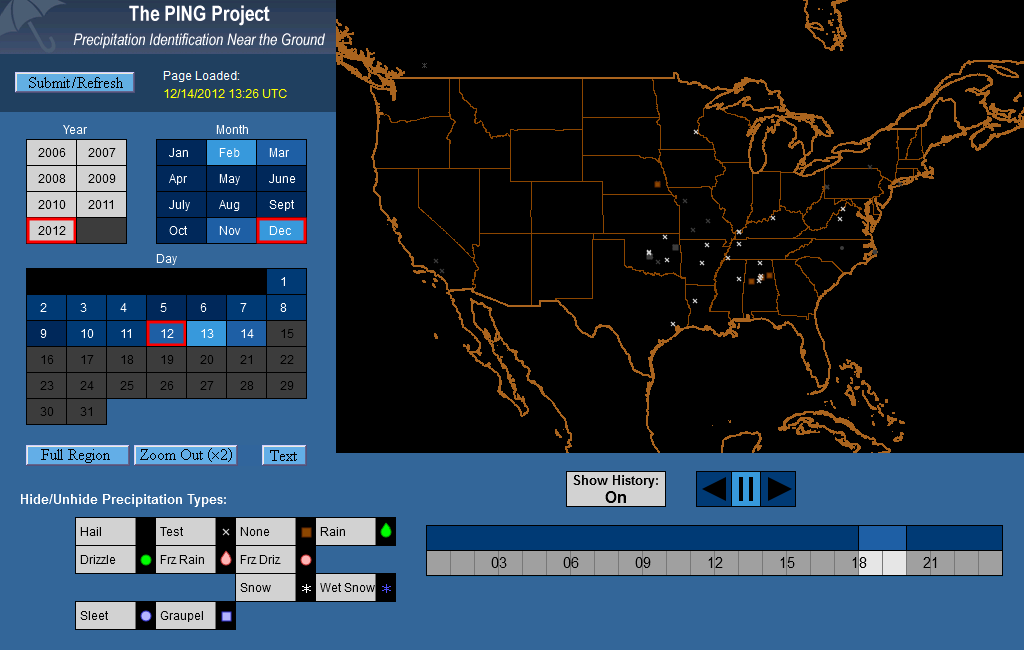
Multiple clipper systems will bring cold temperatures and enhance lake-effect snow downwind of the Great Lakes. An arctic blast will bring frigid temperatures accompanied with gusty winds that may lead to dangerous wind chills beginning in the Northern Plains Thursday before expanding to the South and East. An expansive winter storm will start Friday in the Southern Rockies/Plains and Mid-South. Read More >

An exciting new project from the National Severe Storms Laboratory is underway in an attempt to improve how dual-polarization radar algorithms help meteorologists determine what precipitation type is likely to occur at the ground during winter storms. Called W-PING (Winter Precipitation Identification Near the Ground), the study seeks to collect numerous ground-truth reports of what precipitation type is occurring in winter storms in real time, from volunteers who willingly log on to NSSL's website (or use available smartphone apps) and submit their location, time, and precipitation type. With hopefully thousands and thousands of reports throughout the United States during the upcoming 2012-2013 winter season, NSSL researchers will be able to time-match the reports to National Weather Service (NWS) WSR-88D Doppler radar products, and use environmental data from high resolution computer models to simulate the environment below the radar beam. This research will lead to a much more refined Hydrometeor Classification Algorithm, one of the benchmark products of the new dual polarization radar upgrade across the NWS. Currently, one of the biggest issues with precipitation type as it relates to radar is the presence of melting or freezing layers that exist below the radar beam. So while the current HCA from dual pol radars provides a likely precipitation type, that type is only valid where the radar beam is sampling the precipitation -- usually several thousand feet above the ground. The presence of a warm layer (or cold layer) below the radar beam -- if one exists -- changes the precipitation type before it reaches the surface, and this can be very difficult to diagnose observationally in real time. This project will help -- by integrating ground-truth reports with high resoultion computer model data, and new dual polarization data to provide meteorologists with a better Hydrometeor Classification Algorithm, and a better look inside winter storms in coming years. How To Participate (PC)To submit precipitation reports when you are near your desktop PC, simply go to the Ping Report Form and fill in the necessary information. There is additional information on the page to assist you in filling it out.How To Participate (Smartphone)Go to the appropriate app market for your device (iOS or Android) and download the free app. The app is called m-PING, and is currently only available for the iOS platform. An Android-based app will be available very soon. The iOS version is also available here: m-PINGHow To View Other Precipitation ReportsSimply navagite your browser to the PING Display Page and navigate to the date/time of interest! A sample screen capture is presented below.
Seth Binau - Science/Operations Officer |